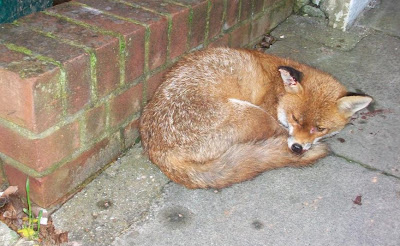Mass unemployment, forcing the unemployed into work... yes it's back to the 1920s. Back then, the unemployed in the Camberwell/Peckham/
Nunhead area had to report to the old Workhouse in Gordon Road. As the 1896 map below shows, it was by the railway just north of the
Brayards Road junction, on a site that stretched to Consort Road. Most of the buildings are long gone, but part of the site continues as
the Spike (currently awaiting eviction by the Council). Its origins seem to go back to 1848 when the Sisters of the Christian Retreat established Nazareth House as a retreat and to provide charity for the
Peckham poor. Later it became the
Camberwell Reception Centre - a doss-house for unemployed famously featured in the opening scenes of the 'swinging London' movie
Blow Up.
Back in the 1920s though, it was the scene of conflict between the 'organized unemployed' and the
Camberwell Board of Guardians, as these reports show:
Unemployed Organiser Summoned: Relief Station Incident (Times, March 13 1922)At
Lambeth Police Court on Saturday, before Mr
Rooth, Stanley Ernest Dallas, of Church-street,
Camberwell, was summoned for threatening two officers in the service of the
Camberwell Guardians. Mr Perry
Robinson, prosecuting, said the defendant was the organiser of the ‘
Camberwell Organized Unemployed’, a body which held Communist principles. On February 3, accompanied by about 50 men, he entered the
Nunhead relief station and said he had been informed that unemployed applicants had been treated very badly, and he was going to put a stop to it. When Mr Mills, a relieving officer, told him to make his complaint to the guardians he replied: ‘If you don’t take care there will be trouble. All I have to do is press a button, and then I can have between 500 and 1000 men, and then there will be trouble’. Officers who attempted to leave the station to fetch the police were prevented by the crowd, and when one went to the telephone box he found that the wire had been cut. The defendant denied that any threats were used, and the hearing was adjourned’.
 March of Unemployed to Workhouse: Encounter with Police at Camberwell (Times, 9 February 1926)
March of Unemployed to Workhouse: Encounter with Police at Camberwell (Times, 9 February 1926)‘A march took place yesterday of the organized unemployed of
Camberwell to Gordon-road Workhouse,
Nunhead, one of the institutions of the
Camberwelll Board of Guardians, as a protest
against what the unemployed considered the unjust scale of out-door relief and the methods of granting it. The demonstrators, to the number of between 300 and 400, moved off in procession from
Camberwell Green to the Gordon-road Workhouse. A short, sharp encounter between the unemployed and a strong force of mounted and foot police followed shortly afterwards. Mounted police preceded the men on their march, and when the marchers wheeled into Gordon-road, where the mounted men, reinforced by foot police, drew across the road and barred further progress.
A rush of the unemployed followed, and for a few seconds it seemed probable that an ugly situation would develop. Fortunately, however, the police kept firm control of the situation. A cripple, on crutches, and a little boy were knocked to the ground in the general confusion. Continuing their march, the demonstrators later endeavoured to surprise the police by making an unanticipated rush towards another approach to the workhouse, but again they were unsuccessful.
Arrived at
Nunhead Green, a further series of speeches was delivered, in which the police were criticized and a resolution of protest against the conduct of the mounted and foot police was adopted, after it had been alleged that a truncheon had been used by an officer, and that others had ‘taken five of our men down the road’. The police state that no arrests were made’.
 This house in Wickham Road (number 44) was the launchpad for the career of arguably England's greatest singer songwriter: Kate Bush.
This house in Wickham Road (number 44) was the launchpad for the career of arguably England's greatest singer songwriter: Kate Bush.

































